Tubular Stays and Other Fender News
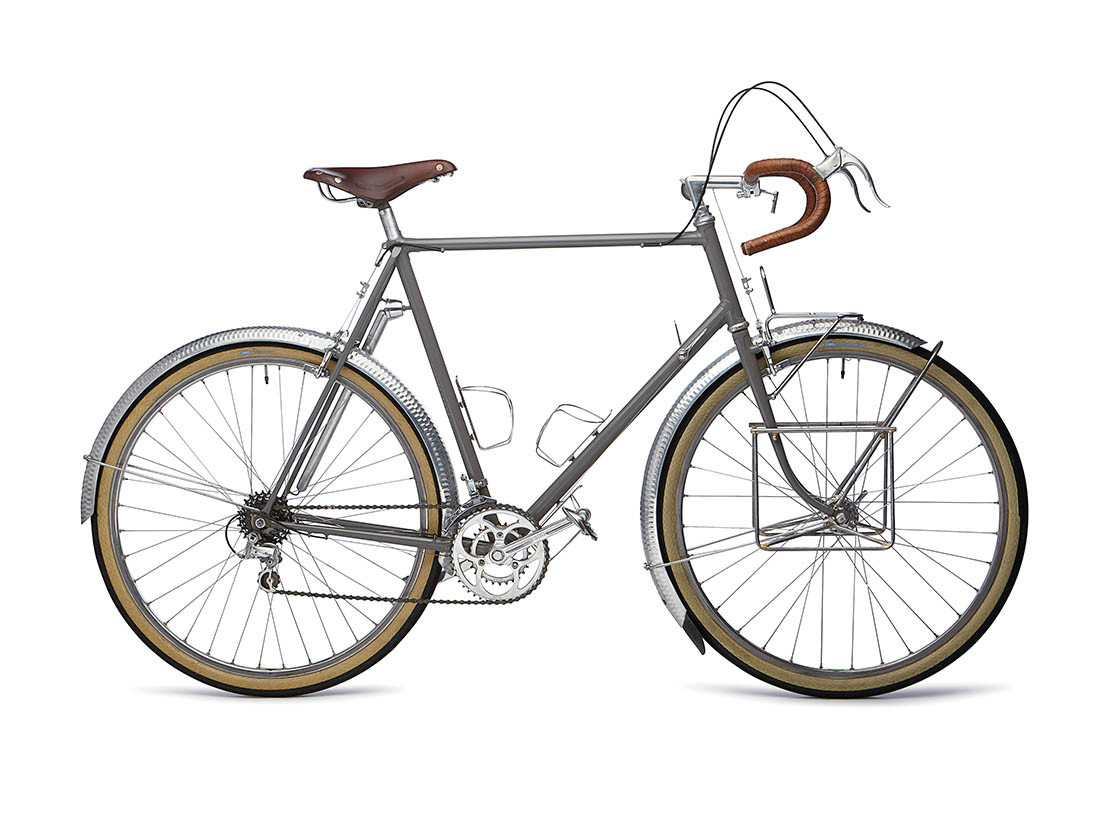
Many years ago, a big magazine published a note about Honjo fenders, which were just starting to trickle into the United States, and noted: “We are charmed by the idea that there actually are fender snobs.”
Those days are long over: Today fenders are recognized as an integral part of many performance bikes. Those of us who ride year-round need fenders that not only keep us and our bikes dry and clean, but also don’t rattle, resonate or break prematurely. We also want them to offer as much performance as possible.
Tens of thousands of miles of riding with fenders have shown us what works and what doesn’t. Honjo’s aluminum fenders keep us drier and are lighter and more aerodynamic than any plastic fenders we’ve tested.
The fenders Compass sells are made by Honjo to our own specifications. The most noticeable detail is the added coverage: 165° on the front and 200° on the rear. On the front, that means no spray on your feet and bottom bracket/chain (further helped by a short mudflap). On the rear, the fender can extend beyond the bottom bracket to keep the chain dry and clean even in crosswinds. These are small details, but they make a large difference.
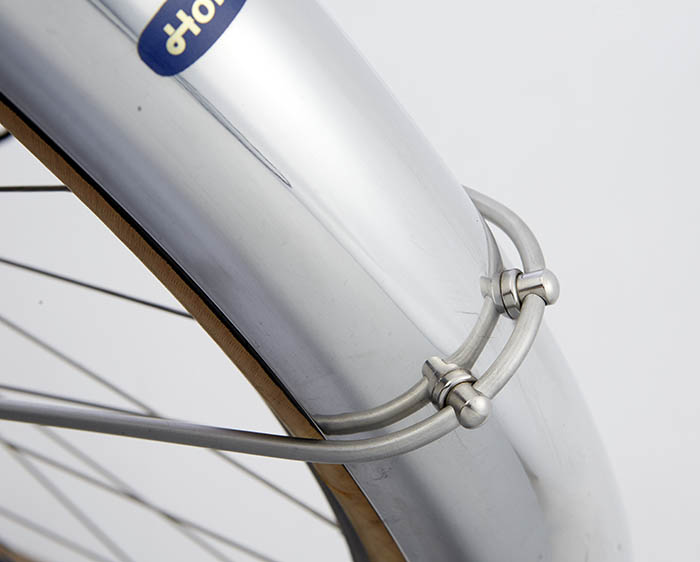
One reason why we’ve found Honjo’s fenders so superior is their stays. They run all the way around the fender, rather than connecting to flimsy flat brackets. This makes them stiff and strong. The fenders we sell at Compass come with our own Rene Herse eyebolts (above). Not only is their rounded shape more elegant, but the threads are 7 mm long – exactly the right length, so the bolt doesn’t stick into the fender any further than needed. And the special ‘Tensiloc’ nuts we use prevent the fender bolts from loosening.
That hardware adds a little to the cost, but it means that you can install these fenders and forget about them. I’ve yet to re-tighten a fender bolt on my current bikes, even though my Urban Bike has seen more than a decade of hard use in the city, and my Rene Herse that has done 2 Paris-Brest-Paris, 2 Raids Pyreneens, the original Oregon Outback and countless other challenging rides.

To save weight on my Herse, I used tubular fender stays. I found the raw material among the stocks we got from Lyli Herse when we bought Cycles René Herse. They were left over from the 1940s Concours de Machines technical trials! My tubular stays have been 100% reliable, and they save 35 g, so we’ve asked Honjo to make tubular stays for our fenders (above).

Starting today, the tubular stays are available as an option on all fenders we sell. We also offer them separately as a retrofit.

We’ve got more fender news: The Gilles Berthoud fender stays are modeled on a style found on many Jo Routens bikes. It’s an elegant design that is also useful if you are fighting toe overlap on your bike.

The flat section on the rear of the stay attaches directly to the fender. That eliminates the eyebolts that stick out a few millimeters. It can make the difference between catching your toe or not.

Berthoud fender stays come with a matching bolt kit (not shown). You can also rivet these stays directly to the fender to save a little weight.

We also stock plastic R-Clamps from Gilles Berthoud to attach the fender stays to the frame or fork. These are useful if you want a safety release on your fender stays: The stay will pull out of the plastic clamp if a foreign object gets caught between fender and tire. This is useful if your fenders are mounted with less-than-optimal clearances, as it reduces the risk of the fender collapsing and jamming into the fork crown.

Why not use the plastic R-Clamps on all bikes? When you ride on rough roads, the stays can work loose over time. Check them periodically to make sure.
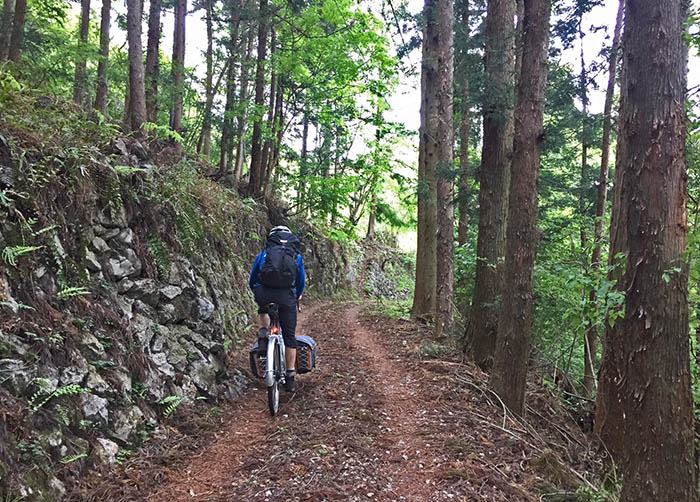
Since our bikes wear their fenders year-round, and we ride on gravel and in the forest, we take fender safety seriously. We’ve researched this, and here is what we’ve found: If you have the recommended 20+ mm clearance between tire and fender, objects that are small enough to be picked up with great force will go through the fender without causing any harm. Large objects have too much inertia to accelerate to a speed that allows them to do much damage. The fact that aluminum fenders is far stiffer than plastic ones helps in this respect. Wider fenders are stiffer than narrower ones, making them even safer.
During our research into fender safety, I asked all the old randonneurs I know in France about fender-related accidents. Nobody remembered any, even though these guys and women rode tens of thousands of kilometers a year – fast. I heard about all kinds of crashes, but everybody agreed that their aluminum fenders were completely safe.

If you have sufficient clearance between tire and fender, we recommend the metal Honjo R-Clamps. (Our fenders come standard with them.) They are more elegant as well as more secure. They will never come loose. You can use either clamps with all fender stays we sell.
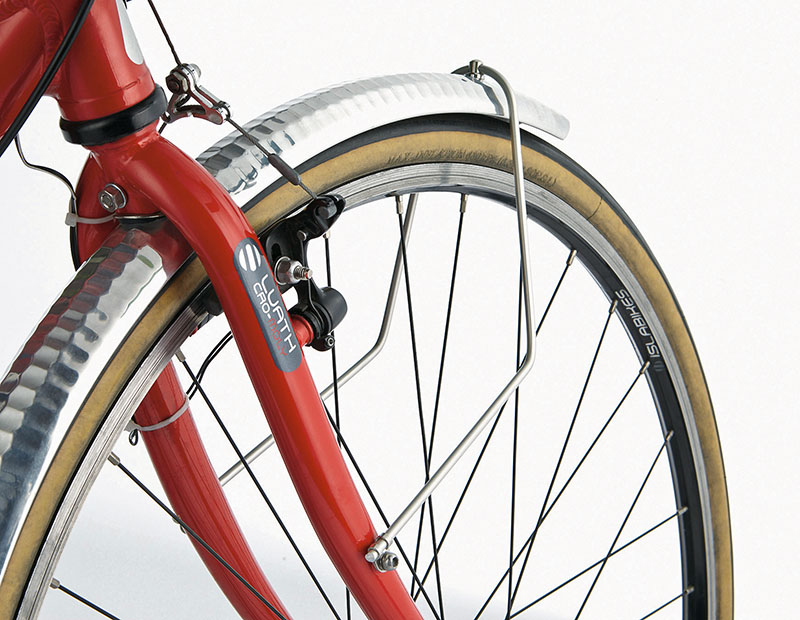
Often overlooked, yet very important: a third attachment point for the front fender. Every fender needs three attachments to stabilize it in three dimensions, so it’s silent and doesn’t resonate on rough roads. With just two attachments, the fender can twist and flex, which can bring the fender’s trailing end in contact with the tire. Then, the tire pulls along the fender, which risks collapsing and jamming into the fork crown.
Many randonneur bikes have racks that incorporate the third attachment point for the fenders. (All Compass racks do.) If you don’t plan to use a rack with a fender attachment, we sell single Honjo fender stays to stabilize the front of the fender. The single stay comes with two R-Clamps and a single eyebolt to attach it to your fender and fork. The most elegant solution is to mount the stay to mid-fork eyelets (above), but you can also run it stay all the way down to the dropout eyelets as well.
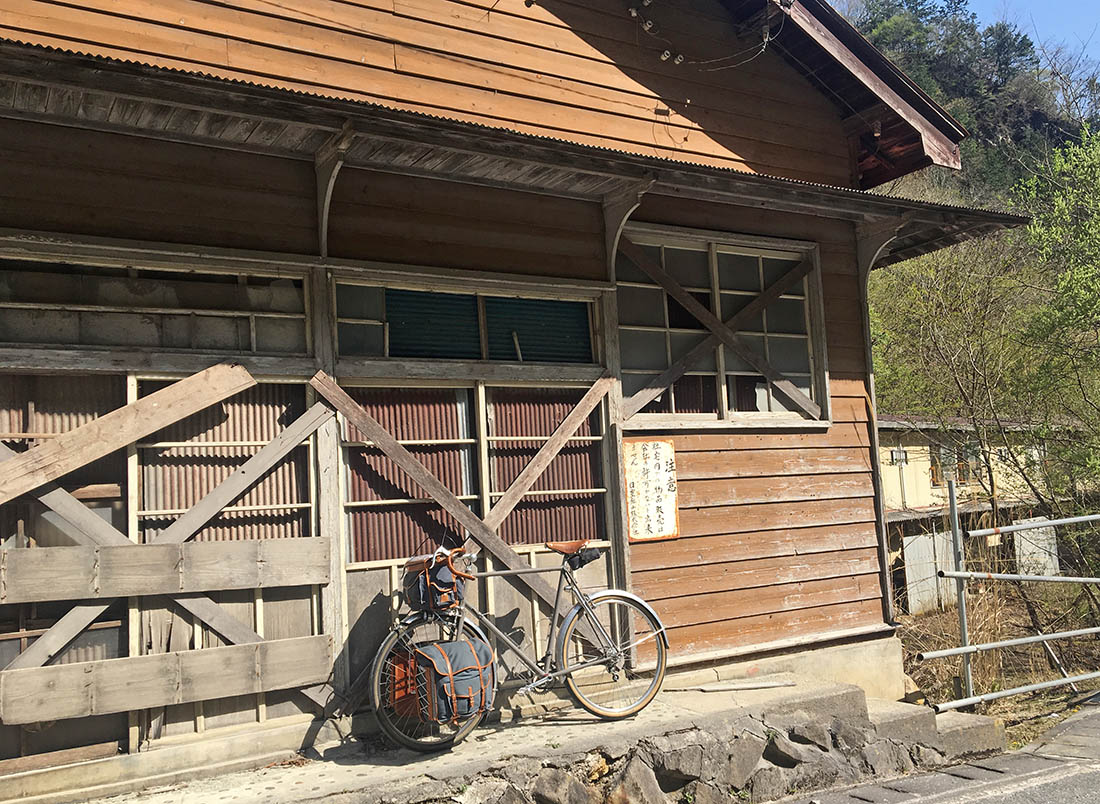
We have to say that we are quite excited about the fender news here at Compass. Does that make us ‘fender snobs’? Ask us when we hit a rainshower on a long ride that crosses multiple mountain ranges and continue without undue suffering!
Click here for more information about Compass fenders.


